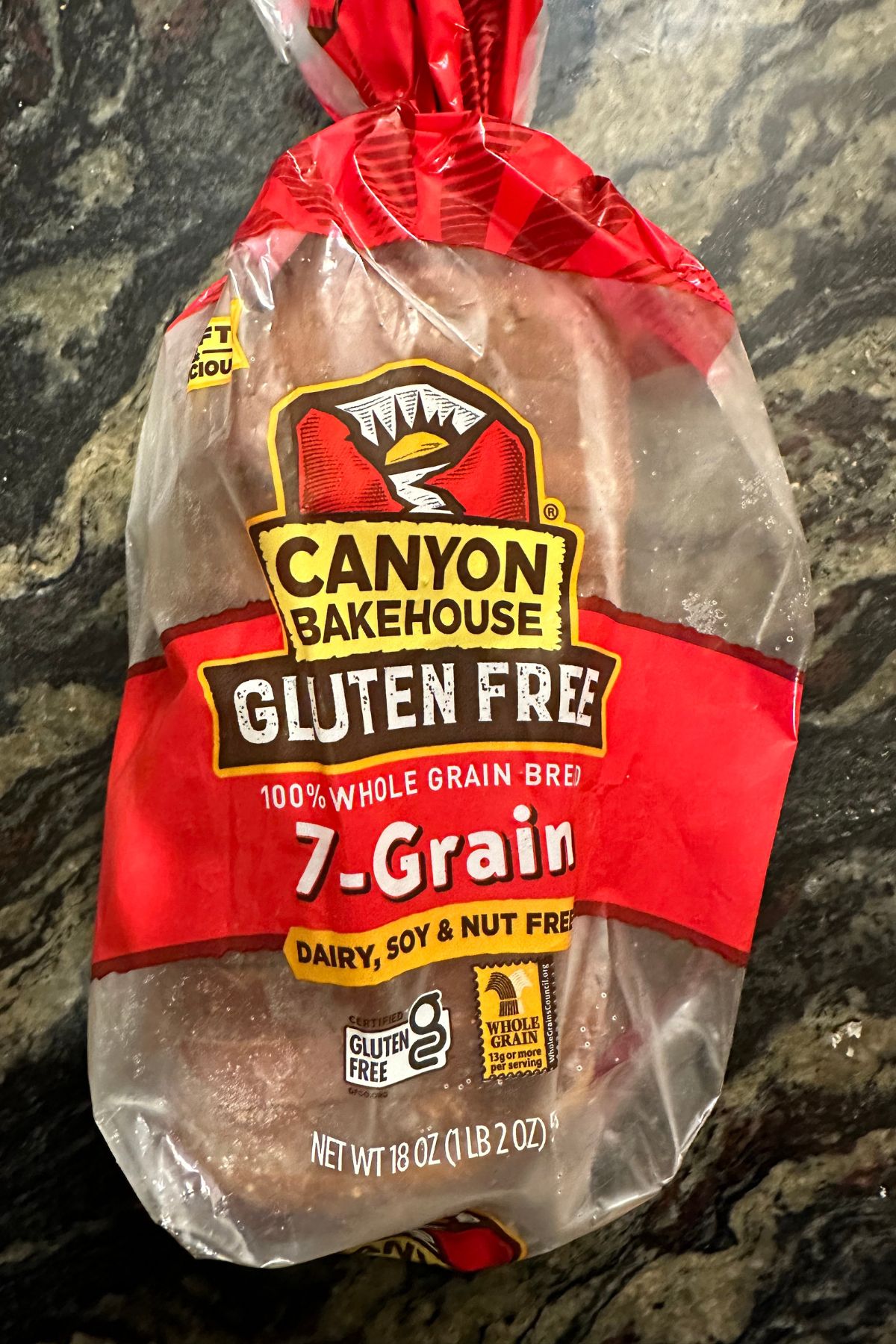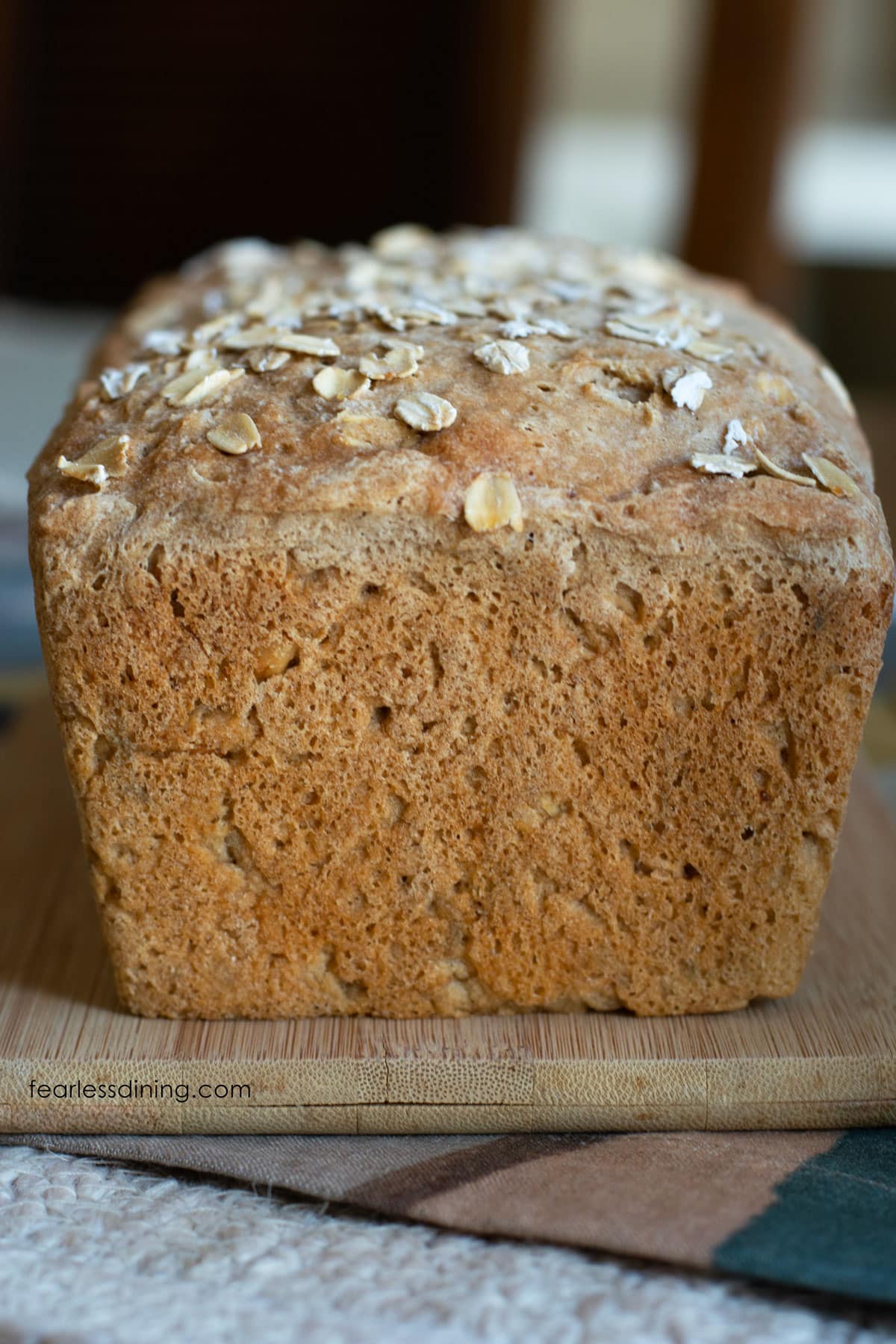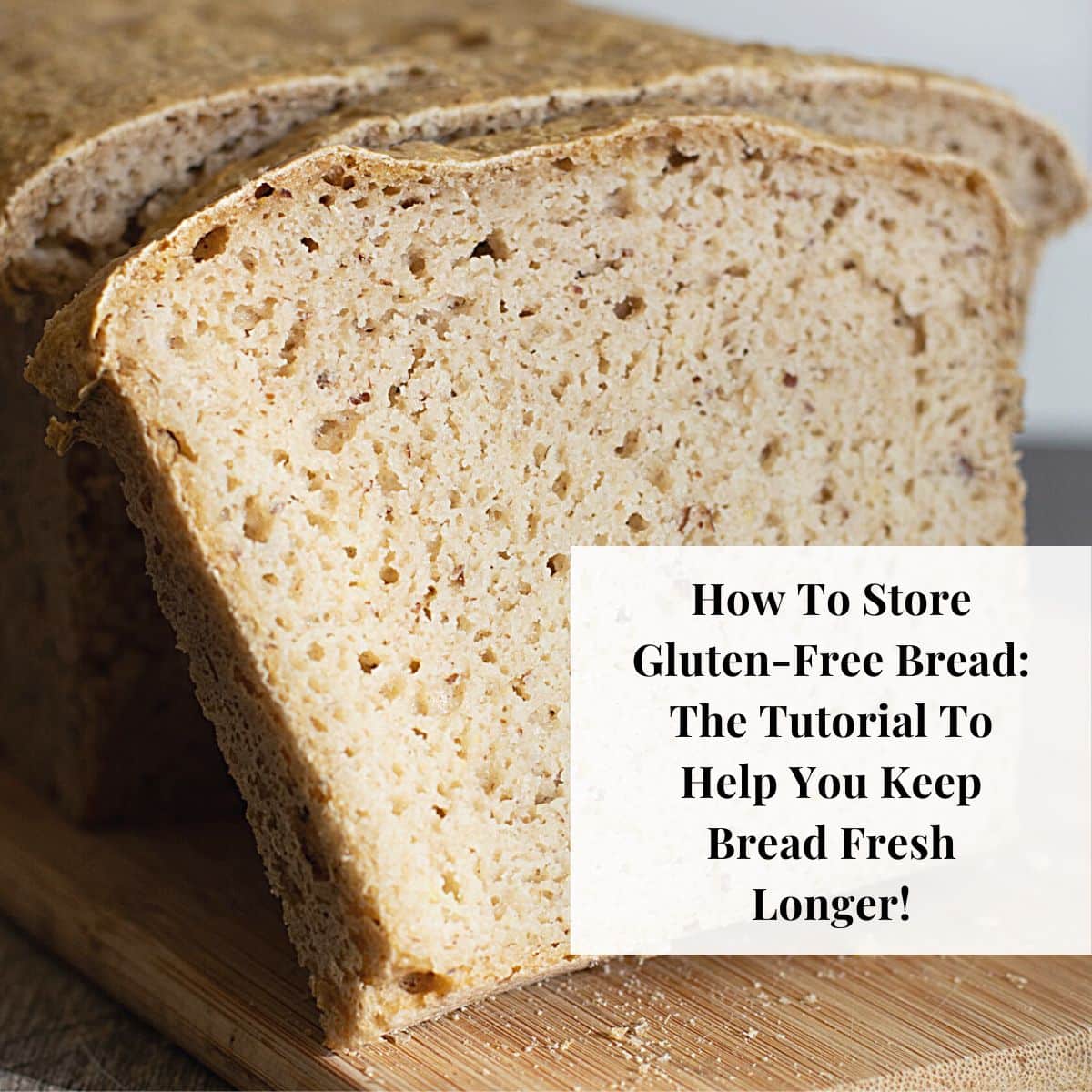Storing gluten-free bread is important to keep it fresh and tasty. Like regular bread, gluten-free bread needs proper care to prevent it from getting stale or moldy. Let’s talk about some simple ways to store gluten-free bread so that you can enjoy it for a longer time.
This post may contain affiliate links. Please read our Disclosure Policy.
Whether you’ve baked gluten-free bread yourself or bought it from a store, these easy tips will help you keep your gluten-free bread (and other baked goods) delicious and ready to eat.
Storing gluten-free bread properly is such an important thing to do. Gluten-free ingredients are expensive, and nothing is as demoralizing as baking or buying an incredible gluten-free loaf of bread and finding it turned moldy within two days. I am here to help you prevent this from happening!
If you love to bake, I have lots of great gluten-free bread recipes for you to try. I also have a great gluten-free bread troubleshooting guide if you are learning how to bake your own homemade bread.
New to gluten-free bread baking? Don’t miss my Ultimate Guide to Gluten-Free Bread Recipes That Work—it’s packed with tested tips, flour advice, and reader-favorite recipes.
How To Store Gluten-Free Bread:
Gluten-free bread tends to have a shorter shelf life compared to regular bread. This is because gluten free bread tends to have fewer preservatives to help it stay fresh. Gluten-free bread also has more moisture due to the starch content in gluten-free flour blends.
In the freezer:
If you have wondered if you can freeze gluten-free bread, the answer is yes. You can and should store your gluten free bread in the freezer! Freezing bread is the BEST way to store gluten-free bread. If you don’t plan to consume the gluten-free bread within a couple of days, consider freezing it.
In the fridge:
Storing your gluten-free bread in the refrigerator can be a double-edged sword. On one hand, it will prevent your bread from getting moldy within 2-3 days, but the moisture in the refrigerator can also cause your bread to mold. As a rule, if you don’t plan to eat the whole loaf, I recommend freezing the bread.
If you do want to keep your bread in the refrigerator for a couple of days, use an airtight container or resealable plastic bag to prevent moisture and odors from affecting the bread.
On the counter or in a bread box:
I do not recommend this, as gluten-free bread can go from okay to moldy in a day…especially during the summer.
How to Freeze Gluten-Free Bread:
- If you are going to freeze homemade bread, allow the loaf of bread to cool to room temperature fully.
- If the gluten free bread isn’t pre-sliced, you can freeze the whole loaf or in slices. I like to slice the loaf of bread, so I can thaw a few slices at a time as I need them. Slice your bread with a serrated knife on a cutting board.
- Wrap each slice in plastic wrap or put a small piece of wax paper between each slice. This will help prevent them from sticking together in a big clump of bread slices.
- Place the slices in a gallon-sized freezer zip-style bag or an airtight, freezer-safe container. Thaw slices as needed in the microwave oven or toaster.

Email This Recipe To Me!
🔑 Sandi says: Most gluten free bread you find in the grocery store is already frozen and stored in the store’s freezer section. If you buy store-bought frozen sliced bread, you can just put the bag of bread into your freezer. There is no need to wrap the slices if the bread is already frozen.
Bread Storage Tips:
Airtight containers: Store gluten-free bread in airtight containers to prevent exposure to air, which can lead to quicker spoiling. Make sure the container is clean and dry before placing the bread inside. As with using a freezer bag, I recommend putting plastic wrap or wax paper between the slices before freezing.
Avoid moisture: Moisture can make gluten-free bread soggy. Ensure the bread is completely cooled before storing it, and avoid storing it in a humid environment. A good rule of thumb is moisture = mold.
Room temperature: If you plan to consume the bread within a day or two, storing it at room temperature is okay. Note: I wouldn’t recommend this if your house doesn’t have air conditioning in the summer as many Bay Area houses. If you use air conditioning and your house isn’t hot and humid, keep it in a cool, dry place away from direct sunlight for up to two days.
Avoid direct sunlight: Exposure to sunlight can cause gluten-free bread to become stale more quickly. Store it in a dark place or use opaque containers.
Remember that the specific storage method can vary depending on the type of gluten-free bread you have and any recommendations provided by the manufacturer. Always check the product’s packaging for any specific storage instructions.
Use these tips to store all of your baked goods, including:

Delicious Gluten-Free Bread Recipes:
- Easy Gluten-Free Bread Machine Bread Recipe
- Gluten-Free Oat Bread (pictured above.)
- No-Yeast Gluten-Free Bread
- Gluten-Free Challah
- Brown Gluten-Free Seed Bread
- Gluten-Free Bread Made Without Rice Flour (pictured at the top of the post.)
- Gluten-Free Buckwheat Bread
Have a tip?
We would love to hear if you have a great gluten-free bread tip. Please leave a comment. Thank you!


